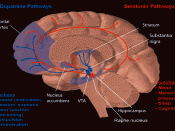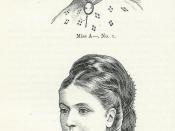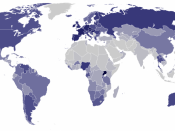Alcohol use and behaviors in women long-distance race participants reporting a history of bulimia and/ or anorexia nervosa women long-distance racers were more likely to report a past history of an eating disorder than the control population and that reported in the general population. We cannot say that running was responsible for the development of the eating disorder. It may be that running can prevent or control eating disorders. High achieving, disciplined, organized women with a history of an eating disorder may be attracted to long-distance running. The method of defining a case was based simply on the respondent replying affirmatively to the questions "Do you have a history or bulimia/" and/or "Do you have a history of anorexia nervosa?" This method of case definition is based on a history of such a disorder and does not necessarily reflect an active problem.
Researchers found that women reporting a past history of bulimia and a history of problem alcohol behavior as noted by other investigators and were more likely to report a biologic family member with a history of problem drinking.
Even with their history of problem alcohol behavior, the runners reporting a history of bulimia did not differ from other runners or the control population in their drinking patterns in a recent two-week period. Total amount of alcohol consumed, occasions of drinking and occasions of binge drinking were not significantly different among any of the women. Researchers were unable to ascertain if running helped control alcohol consumption in a person prone to problem alcohol consumption in a person prone to problem alcohol behavior or if the decreased alcohol consumption predated the onset of running.
Those women reporting a past history of a mixed type of eating disorder, perhaps reflecting severity, ran more days of the week and more miles per week than other runners. These women also had the lowest weight and desired weight of any group. The drive for thinness is a hallmark of anorexia but anorexics with bulimia generally are more prone to use vomiting and/or laxatives for weight control than intense exercise or severe food restriction. This subtype of anorexia is also more likely to be prone of problems with alcohol. This was not true for the women in this study.
A limitation of the study is the small numbers in the eating disorder groups. With a larger series of cases, the small differences in alcohol consumption could be significant. However, the amount of alcohol consumed by any group is not extraordinary and reflects moderate drinking.
Other limitations of this study include non-responders, time of administration of the questionnaire to race participants and inherent problems of using questionnaires and self-report items in eating disorder and alcohol research. Denial is common among those with drinking problems and may be reflected in those who chose not to respond. However, the response rates of 59% for race participants and 52% for the control population should ensure that responders were a reasonable representation of the population. The size of the control population was also smaller than anticipated due to nearly half of them reporting some form of endurance exercise and thus being eliminated as a contrast group.






